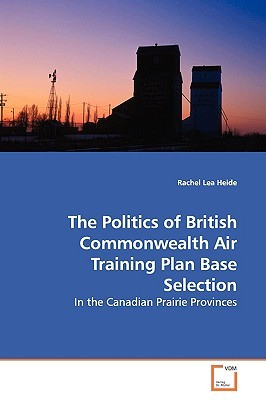
- We will send in 10–14 business days.
- Author: Rachel Lea Heide
- Publisher: VDM Verlag
- ISBN-10: 3639141814
- ISBN-13: 9783639141818
- Format: 15.2 x 22.9 x 1.2 cm, softcover
- Language: English
- SAVE -10% with code: EXTRA
The Politics of British Commonwealth Air Training Plan Base Selection (e-book) (used book) | bookbook.eu
Reviews
Description
Between 1940 and 1945, Canada trained 131,533 Commonwealth pilots and air crew under the BCATP for the Allied war effort. To do so, the RCAF had to expand its aerodrome infrastructure to accommodate over one hundred training schools and their auxiliary fields. Few historians have considered the site selection process, assuming that community lobbying and political patronage determined where air bases were built. To verify these hypotheses, the author has consulted the primary records (politicians' personal papers, communities' lobbying letters, official investigation reports, and final selection decisions), reconstructed the BCATP selection process, and discovered that partisan politics played no part. Experts from the Department of Transport and the RCAF evaluated and selected sites according to pre-determined, objective, and technical criteria that ensured the timely and economical development of aerodromes suitable for military air training. The book will be of value to anyone interested in Canada's air force, government policy, civil-military relations, political activism, and the Western provinces during the Second World War.
EXTRA 10 % discount with code: EXTRA
The promotion ends in 16d.05:55:48
The discount code is valid when purchasing from 10 €. Discounts do not stack.
- Author: Rachel Lea Heide
- Publisher: VDM Verlag
- ISBN-10: 3639141814
- ISBN-13: 9783639141818
- Format: 15.2 x 22.9 x 1.2 cm, softcover
- Language: English English
Between 1940 and 1945, Canada trained 131,533 Commonwealth pilots and air crew under the BCATP for the Allied war effort. To do so, the RCAF had to expand its aerodrome infrastructure to accommodate over one hundred training schools and their auxiliary fields. Few historians have considered the site selection process, assuming that community lobbying and political patronage determined where air bases were built. To verify these hypotheses, the author has consulted the primary records (politicians' personal papers, communities' lobbying letters, official investigation reports, and final selection decisions), reconstructed the BCATP selection process, and discovered that partisan politics played no part. Experts from the Department of Transport and the RCAF evaluated and selected sites according to pre-determined, objective, and technical criteria that ensured the timely and economical development of aerodromes suitable for military air training. The book will be of value to anyone interested in Canada's air force, government policy, civil-military relations, political activism, and the Western provinces during the Second World War.


Reviews